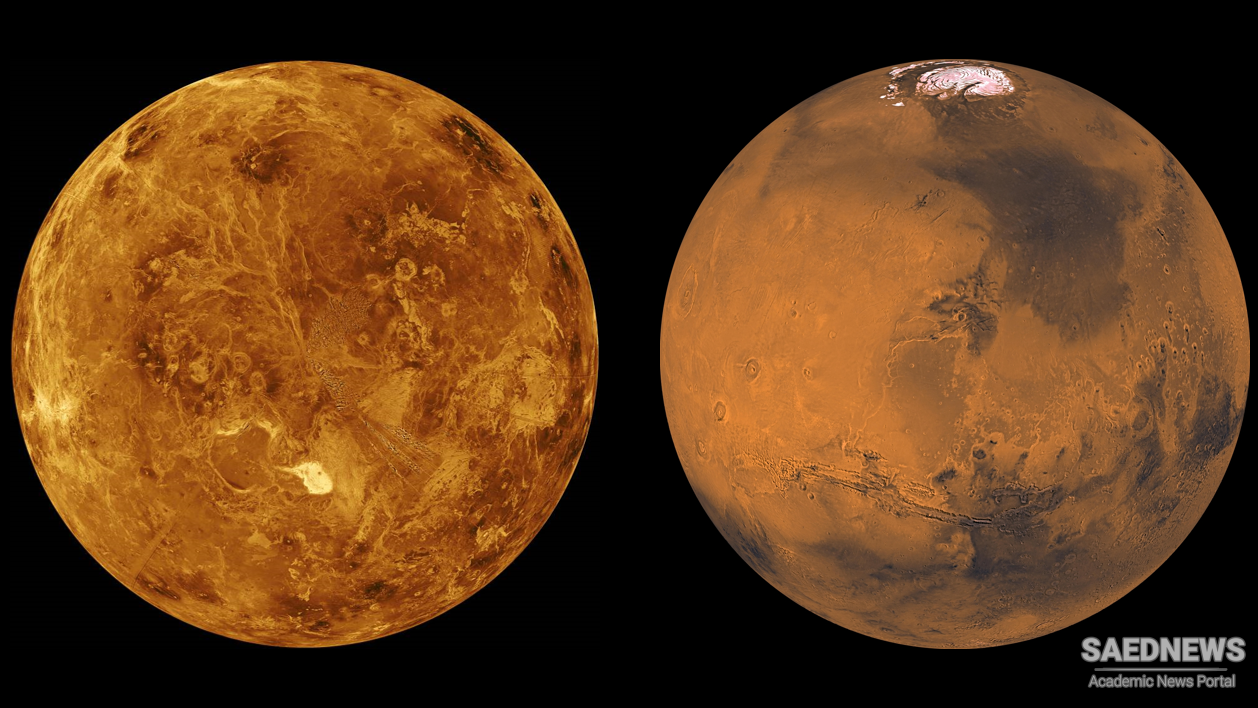A barometer on the surface of Mars would record an atmospheric pressure less than one per cent of that on the Earth. Its atmosphere, which consists almost entirely of carbon dioxide, contributes a small but significant greenhouse effect.The planet Venus, which can often be seen fairly close to the Sun in the morning or evening sky, has a very different atmosphere to Mars.
Venus is about the same size as the Earth. A barometer for use on Venus would need to survive very hostile conditions and would need to be able to measure a pressure about one hundred times as great as that on the Earth. Within the Venus atmosphere, which consists very largely of carbon dioxide, deep clouds consisting of droplets of almost pure sulphuric acid completely cover the planet and prevent most of the sunlight from reaching the surface. Some Russian space probes that have landed there have recorded what would be dusk-like conditions on the Earth – only one or two per cent of the sunlight present above the clouds penetrates that far. One might suppose, because of the small amount of solar energy available to keep the surface warm, that it would be rather cool; on the contrary, measurements from the same Russian space probes find a temperature there of about 525 ◦C – a dull red heat, in fact.
The reason for this very high temperature is the greenhouse effect. Because of the very thick absorbing atmosphere of carbon dioxide, little of the thermal radiation from the surface can get out. The atmosphere acts as such an effective radiation blanket that, although there is not much solar energy to warm the surface, the greenhouse effect amounts to nearly 500 ◦C.


 Pioneers of the science of the greenhouse effect
Pioneers of the science of the greenhouse effect














































